Grey Cat Breeds captivate pet lovers with their sleek, elegant coats that shimmer in shades from soft blue-grey to silvery mist. Often called “blue” in feline circles, these colors appear across many breeds, offering a mix of personalities from playful hunters to affectionate companions. If you’re drawn to the sophisticated allure of grey cats or considering adding one to your home, this guide explores the top grey cat breeds, their unique features, origins, and care needs to help you choose the perfect match.
Discover more about intelligent cat breeds that might share traits with these smart greys.
Russian Blue
The Russian Blue stands out among grey cat breeds for its long, slender, muscular build and plush double coat in a distinctive blue-grey hue. This silky fur feels luxurious and gives the cat a fuller appearance than its actual size. Kittens start with yellow eyes that mature into striking emerald green as they age.
These cats are playful yet reserved, often bonding deeply with one family member while remaining wary of strangers. They demand impeccable hygiene, refusing a dirty litter box, which underscores their fastidious nature. Russian Blues love food, so portion control prevents obesity. Originating from Russia, their thick coat adapted to harsh, cold climates, with legends claiming their fur mimicked seals, making them hunting targets in the past.
Korat
Korat cats represent one of the purest ancient grey cat breeds, featuring a blue-grey coat tipped with silver for a glowing effect. Small to medium-sized yet muscular, they begin with blue eyes that shift to amber and then vivid green. Their compact bodies hide surprising strength.
Highly social and affectionate, Korats crave attention, snuggling and playing with family while tolerating other pets—though jealousy can arise if attention shifts. Hailing from Thailand, they appear in ancient tamra maew poems from the 14th to 18th centuries, symbolizing luck, health, and prosperity. Rare in the U.S., these grey cat breeds remain cultural treasures.
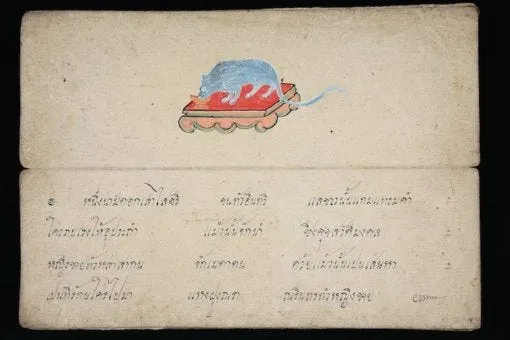 Tamra maew, ancient Thai book illustrating Korat cats
Tamra maew, ancient Thai book illustrating Korat cats
Chartreux
Chartreux grey cat breeds earn their “potato on toothpicks” nickname from robust bodies on slender legs, covered in dense, water-repellent blue-grey wool. Muscular and energetic, they excel as hunters, living up to their legacy in French tales.
Good-tempered and loyal, these quiet cats enjoy fetch and respond to their names. Legend ties them to French Alpine monks at Grande Chartreuse, bred for silent voices during meditation—though unverified. Their playful spirit makes them ideal family pets.
For long-haired grey variants, check out the seal point Himalayan cat.
Nebelung
Nebelung cats mirror Russian Blues but with semi-long, silver-tipped blue-grey coats and graceful builds. Their bright green eyes and muscular frames exude elegance.
Mild-mannered and affectionate, they play gently without overwhelming family life, shying from strangers. This American breed arose from a Domestic Shorthair and Russian Blue cross, named “creatures of the mist” in German for their ethereal look. Nebelungs thrive in calm homes, offering loyal companionship.
British Shorthair
 British Shorthair with plush blue-grey coat and round head
British Shorthair with plush blue-grey coat and round head
Once dubbed British Blue, the British Shorthair boasts a crisp, waterproof plush coat over a stocky, cobby body with a massive round head and thick neck—earning “bulldog cat” status. Medium to large, they’re famously blue-grey but vary in colors.
Quiet at first, they warm to families, excelling with children through patience and adaptability. Britain’s first show cat, they evolved from working moggies to cherished home companions by the late 1800s, per historical records.
Blue Persian
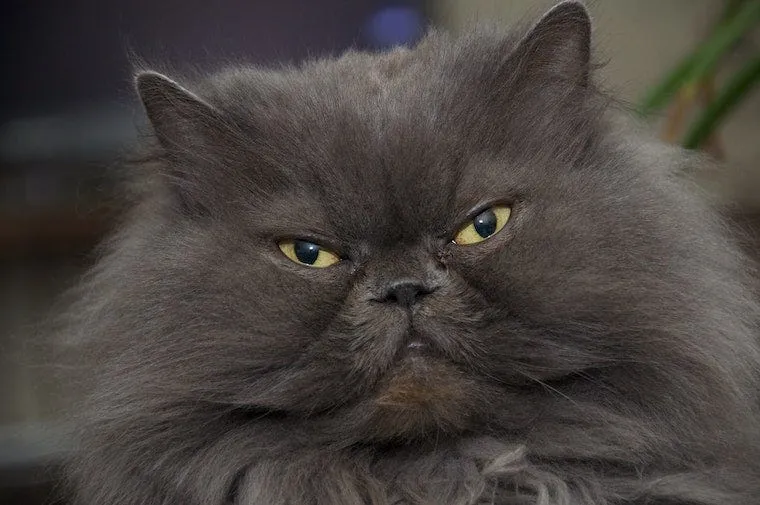 Fluffy grey Blue Persian cat lounging calmly
Fluffy grey Blue Persian cat lounging calmly
Blue Persians, a grey variant of the iconic breed, feature silky long coats in handsome grey. Ancient roots trace to Turkish Angoras crossed with Asian longhairs, charming European nobility like Queen Victoria in the 1600s.
Gentle and sedentary—”furniture with fur”—they prefer grooming over active play, needing daily exercise to stay healthy. Their calm nature suits quiet homes.
Scottish Fold
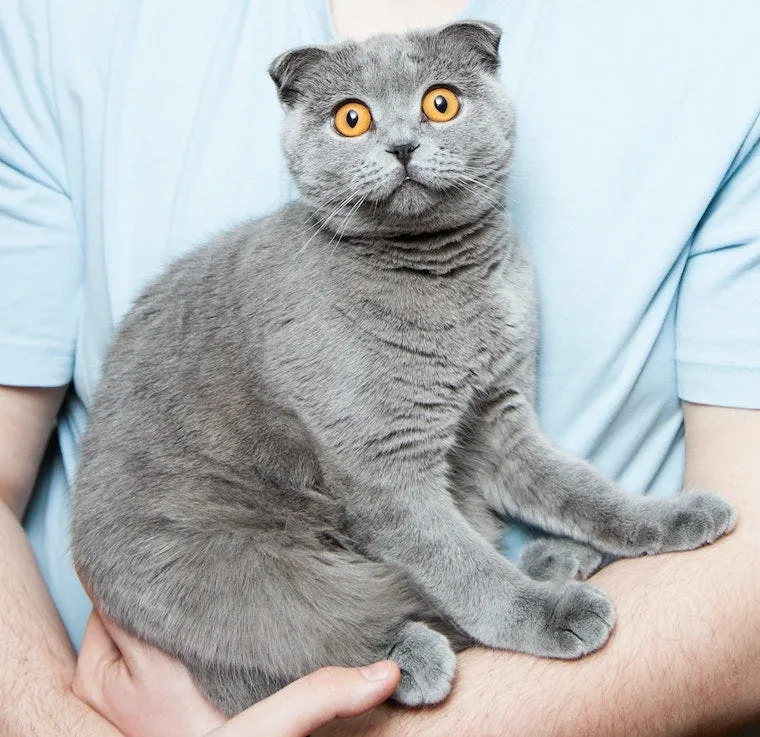 Scottish Fold cat with folded ears and plush grey fur
Scottish Fold cat with folded ears and plush grey fur
Scottish Folds display plush short or long grey coats over padded, sturdy bodies, often “Buddha sitting” upright. Popular worldwide, their sweet dispositions shine.
All trace to 1961 barn cat Susie in Scotland, whose folded ears (appearing in 50% of kittens after 18-24 days) were bred with Persians and others for their rounded charm. Related pointed patterns appear in breeds like the colorpoint Ragdoll.
Sphynx
 Grey Sphynx cat with fine down and wrinkled skin
Grey Sphynx cat with fine down and wrinkled skin
Sphynx grey cat breeds are mostly hairless, with grey skin or fine down requiring weekly baths to prevent oil buildup and skin issues. Born from a 1966 Canadian mutation, named for Egyptian Sphinx likeness, the recessive hairless gene produces varied litters.
Highly social and curious, they demand attention despite their stoic look.
Domestic Shorthair
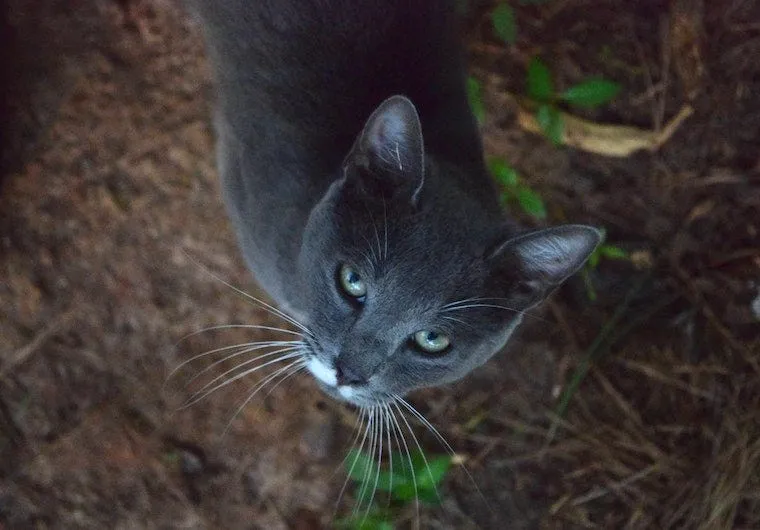 Grey Domestic Shorthair cat with white chin outdoors
Grey Domestic Shorthair cat with white chin outdoors
Domestic Shorthairs, or moggies, dominate U.S. cats at 90-95%, sporting grey in solid, tabby, colorpoint, or tuxedo patterns. Non-pedigreed, their diversity reflects mixed heritage.
Adaptable and common, they embody everyday grey cat charm.
Common Traits of Grey Cat Breeds
Grey cat breeds often share serene yet playful vibes: calm observers who explore curiously, intelligent socializers following owners, with vocal or subtle communication. Individual quirks prevail, but their tranquility enhances homes.
How to Identify Your Grey Cat’s Breed
Pinpointing breed relies on traits beyond color: Russian Blue’s plush coat and green eyes; Korat’s silver tips and sociability; Chartreux’s stocky build; Nebelung’s semi-long fur; British Shorthair’s round head; Sphynx’s hairlessness; Domestic’s patterns. DNA tests confirm, but any grey cat brings joy.
Q: Grey or Gray Cat? Both spellings work—British “grey,” American “gray”—with searches favoring either.
Other Grey Cat Variations
Grey appears in many breeds, amplifying feline diversity. The ultimate joy? A grey cat mastering a self-cleaning litter box for hassle-free hygiene.
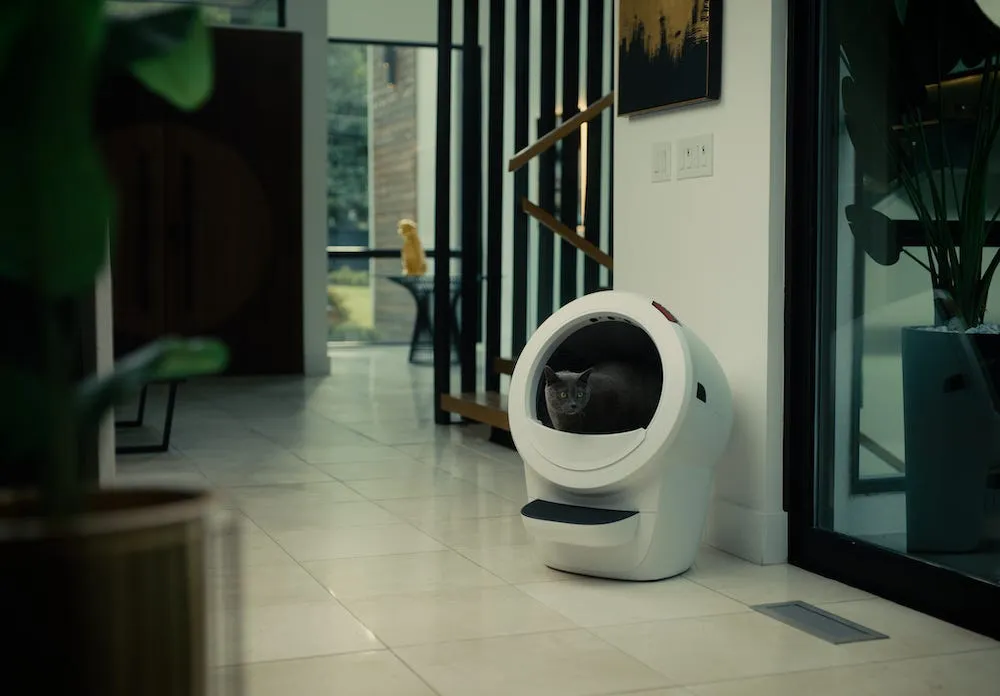 Grey cat using Litter-Robot in modern home
Grey cat using Litter-Robot in modern home
Embracing grey cat breeds means welcoming beauty, loyalty, and unique spirits. Whether purebred or mixed, provide proper care—like clean litter, balanced diet, and vet checkups—for a happy life. Consult vets for breed-specific advice, and explore more pet tips to enrich your furry friend’s world!
